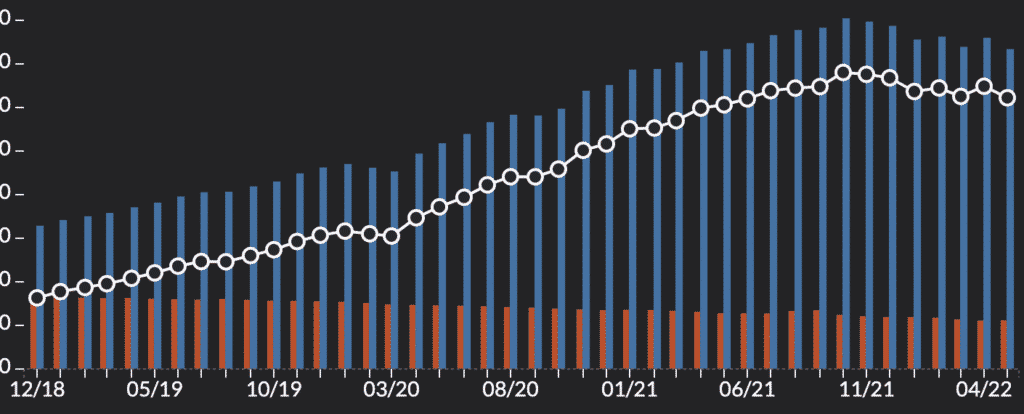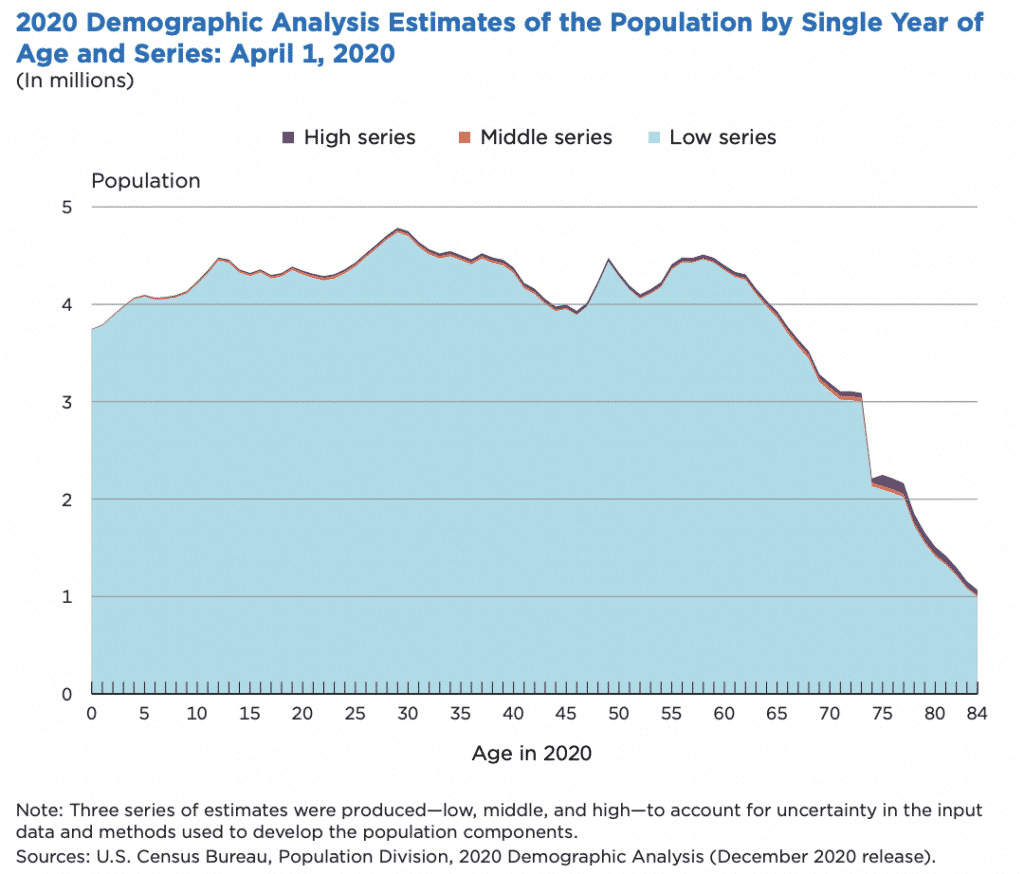I get it. Some of you are here for the basics. My forays into niche topics don’t interest you. Stablecoins? Market psychology? Dividend stocks? Who cares?!
So here are the 11 basic financial tips to get you started.
You Need a Budget
You need a budget. Yes, you. You can’t manage what you don’t measure. A budget measures your money—inflows and outflows. Only through measurement can you then manage (and improve!) your personal finances.
Use pen and paper. Use a spreadsheet (my friend Brennan has a free Excel budget template). Or use an app. Personally, I use an app called YNAB (literally You Need A Budget), and I love it.

Emergency Fund
An emergency fund is Priority #1 in the financial order of operations. It protects you from all that unlucky junk life throws your way.
If you don’t have one, start building it today.
401(k) Match
My American readers might have a 401(k) or 403(b). Non-Americans: you might have a different employer-sponsored retirement plan. The important question is this:
Does your employer offer a “match,” or any kind of free money?
If yes, then you need to maximize that free money. It’s free money!
Roth IRA & HSA
This one is targeted towards the Americans too. If you have the ability to invest in a Roth IRA (you qualify if you’ll earn less than $144K in 2022), you should utilize it. It’s a terrific retirement savings vehicle.
An HSA—or Health Savings Account—is meant for medical expenses. But it can be utilized in retirement years similar to a Traditional IRA. And you get terrific tax benefits along the way. You can invest in an HSA if your medical insurance is a high-deductible health plan (HDHP)
Insurance: Protection vs. Growth
Insurance protects wealth, it doesn’t grow wealth. Plain and simple.
Insurance is protection against the uncontrollable forces of bad luck. You’re paying a premium (literally) to reduce your downside risk. It’s a hedge. Medical, auto, homeowner’s, life insurance…they all have their place.
But your goal with insurance should be to protect wealth. Not to grow wealth.
Why? Here’s an example.
Jeremy buys whole life insurance. It’s expensive, but the policy will grow in value over time.
Lindsay buys term life insurance. It has the same downside protection as whole life, but none of the growth. It’s also much cheaper. Lindsay buys a term policy, then invests the leftover money into a simple diverse portfolio.
Lindsay has the same protection as Jeremy, but her investment portfolio will grow much faster and larger than Jeremy’s whole life policy. Where does the difference in money go? Into the insurer’s pocket.
Insurance protects wealth. It doesn’t grow wealth.
Cars: New, Used, or What?
The best car deals, by far, are found in the used car market. But so are the worst deals.
Auto experts can find underpriced used cars that still have 100,000+ miles of remaining life. But the wrong used car could be a complete lemon. Buyer beware. An extraordinary used car can be as cheap as 20 cents per mile. A bad one might die 1000 miles after you buy it.
On average, a used car will cost about 50 cents per mile driven for its remaining life. An average new car will also cost its owner about 50 cents per mile driven over its life. On average, there’s no difference in cost-per-mile between used and new. But the variance in used cars is huge.
A leased car will cost about 10% more, or 55 cents per mile driven.
Rent or Buy?
The American housing market is chaotic and wild right now. There’s a perfect storm of:
- Not enough new houses being built. The 2008 financial crisis decimated home builders. They got spooked. As a result, the 2010s had the lowest rate of house-built-per-capita in the U.S. on record (source: Statista). Low supply.
- A giant generation is coming of age. There’s a glut of upper-20s and lower-30s millennials (like me!) who want to buy a house. High demand.

- COVID has us stir crazy. “Can I please leave this god-forsaken apartment?!”
My point is that prices are sky-rocketing and it’s affecting both housing and rentals. I wouldn’t begrudge anyone for hesitating to buy into this market craziness. But until more homes are built, it’s hard to see this mania breaking soon.
So – should you rent? Or buy?
Remember this rule: 5% and 5 Years.
First, do you plan on owning this house for at least 5 years? If not, then rent. You can’t recoup the frictional costs of home-buying and a mortgage (closing costs, lawyer fees, etc) if you own it for shorter than 5 years.
Second, compare the cost of a house to the annual rent for a similar home. If the annual rent is less than 5% of the cost of the house, the math favors renting.
- $1000/month or a $300,000 home? That’s $12000 per year rent / $300,000, or 4.0%. RENT!
- My current home would have been ~$800/month rent vs. $110,000 to buy. That’s $9600 per year / $110,000, or 8.7%. BUY!
50/30/20 – Or Something Else?
Elizabeth Warren’s 50/30/20 rule of budgeting is solid. Spend 50% of your money on needs and essentials, 30% on wants and extras, and 20% to saving and long-term investing.
But income levels can make that challenging. For some, the best they can do is 80/15/5. I get it.
The first number (needs and essentials) is non-negotiable. Your needs and essentials are, by definition, difficult to pare down. The second and third groups, however, should be traded against one another.
And while not the most helpful advice, this arithmetic is important: the more you earn, the easier it is to budget. (“Duh, Jesse. You schmuck.”)
Take the story of my raise. That raise took me from a ~50/20/30 budget to 40/16/44. A smaller percentage of my salary was needed for essentials (from 50% to 40%) and fun (from 20% to 16%). Significantly more could be saved (30% to 44%).
Focus on increasing your earning power, especially while young. Invest in yourself, your skills, your professional network, etc.
Portfolio Construction 101
Your investment portfolio should have a few features.
It has to grow enough to meet your goals. But the reward of growth comes with risk. And too much risk can be scary! You don’t want so much risk that you jettison your investment plan during rough markets (just like now in 2022).
Diversification can help. I’ve always invested in U.S. stocks, international stocks, bonds, and alternatives. I rebalance about twice per year.
That’s my plan. I started that plan to survive thick and thin. And I’m sticking with it through thick and thin. I even wrote myself a letter to be opened during the worst of times. That letter says, “You prepared for this, and you’ll be fine.”
Behavior 101
When I started The Best Interest, I was infatuated with math, probability, simulations, compound math, etc.
Now 4 years later, I’ve flipped. The math is still cool. But the psychology of personal finance is so much more important.
For example:
- Budgeting is a habit. Doesn’t matter if you use an app, a spreadsheet, or pen/paper. The habit is what matters.
- The cost of long-term investing is psychological pain. My portfolio is down $40,000+ this year. Am I able to “stay the course” through that discomfort?
- Investing should be systematic, not instinctual. Build a simple system that invests every week, every month, etc. Remove your brain from the process.
- Superior intelligence is a small factor in investing success. By far more important is superior temperament.
- When in doubt, zoom out.
You want to get good at personal finance? Fantastic. You’re in the right place. Spend 5% of your time thinking about the math that’s involved, and the other 95% working on your brain chemistry.
Just Start
The concept of “skin in the game” is vital in personal finance and investing.
Once you have $1000 in the stock market, you’ll be 100x more likely to learn about investing. Why? Because you have (financial) skin in the game.
The way you get skin in the game is by starting.
You can just dip your toe. Start small. Start carefully. That’s fine. But you can’t sit on the sidelines watching and expect the world to unfurl a financial red carpet for you.
I’m walking on that red carpet right now. And I invite you to stand up and go for a stroll with me!
Thank you for reading! If you enjoyed this article, join 8000+ subscribers who read my 2-minute weekly email, where I send you links to the smartest financial content I find online every week.
-Jesse
Want to learn more about The Best Interest’s back story? Read here.
Looking for a great personal finance book, podcast, or other recommendation? Check out my favorites.
Was this post worth sharing? Click the buttons below to share!